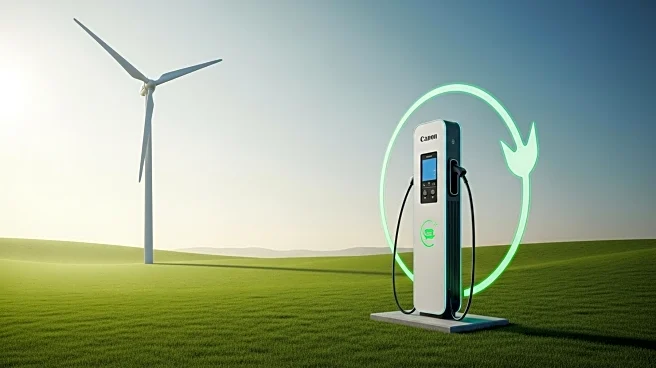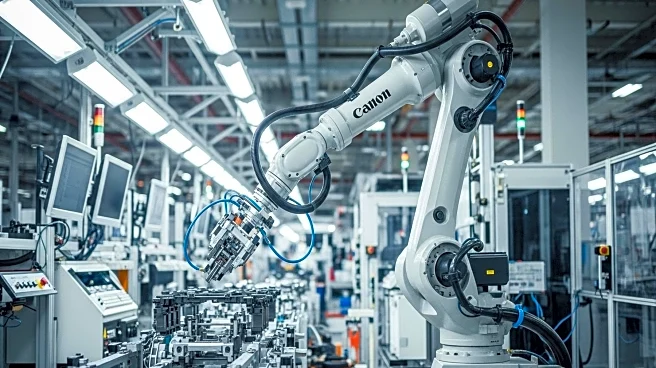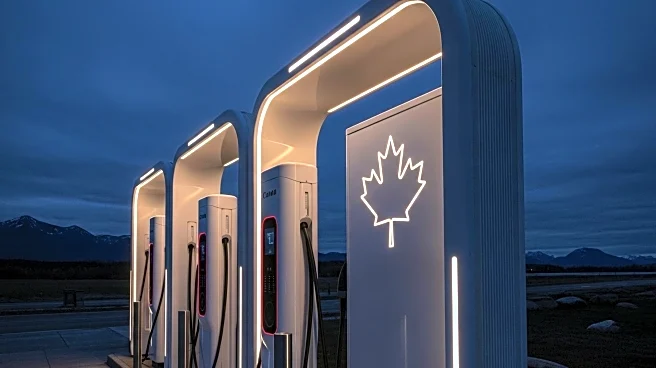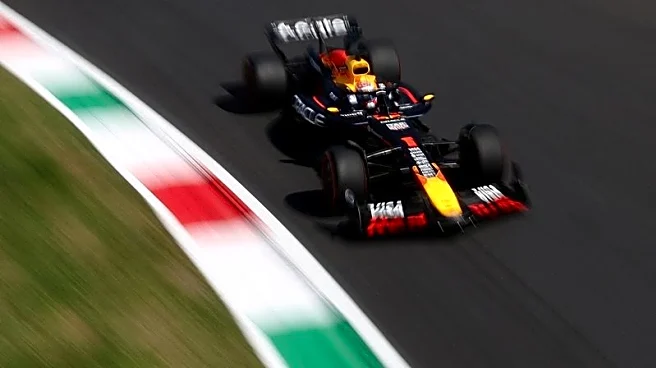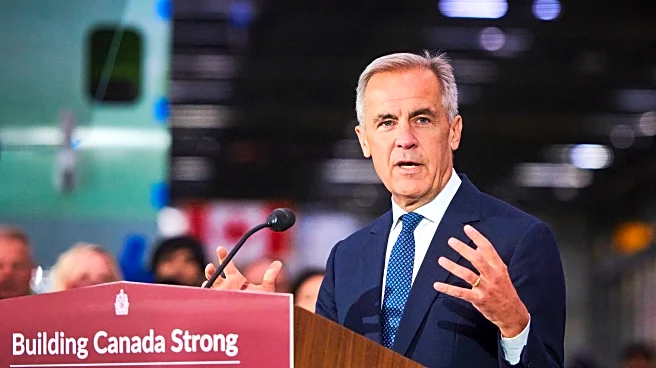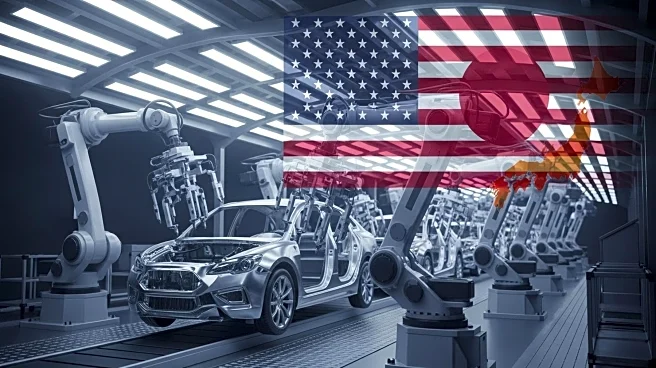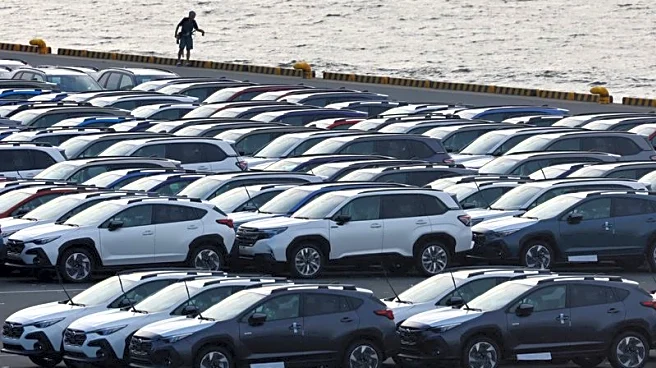What's Happening?
Canada's electric vehicle (EV) policy shift in 2025 mandates 100% zero-emission vehicle sales by 2035, with intermediate targets of 20% by 2026 and 60% by 2030. This policy has prompted automakers like Ford, General Motors, and Stellantis to adjust their strategies, scaling back EV production targets due to limited domestic manufacturing capacity and financial strain from compliance credit systems. The Conservative Party's proposal to repeal the mandate has created regulatory uncertainty, leading automakers to prioritize hybrid and internal combustion engine vehicles. Meanwhile, clean energy firms are capitalizing on infrastructure development opportunities, with Canada investing $700 million in EV chargers by 2027. Strategic partnerships, such as Honda's $15 billion investment in Ontario, are emerging to build a comprehensive EV supply chain.
Why It's Important?
The policy shift is reshaping the automotive and clean energy sectors in Canada, compelling firms to reallocate resources and adopt adaptive strategies. Automakers face short-term profitability challenges due to compliance costs and regulatory uncertainty, while clean energy firms benefit from infrastructure investments and strategic partnerships. The shift towards zero-emission vehicles aligns with global climate goals, but requires balancing long-term commitments with near-term operational realities. Investors must consider geopolitical risks, such as potential tariffs from the Trump administration, which could disrupt supply chains.
What's Next?
Automakers are retraining workforces, renegotiating supply chains, and exploring hybrid models to bridge the gap between internal combustion and zero-emission vehicle markets. Clean energy firms are prioritizing scalability and data-driven decision-making to optimize performance. The path forward involves balancing climate commitments with operational realities, ensuring resilience amid regulatory and market volatility.
